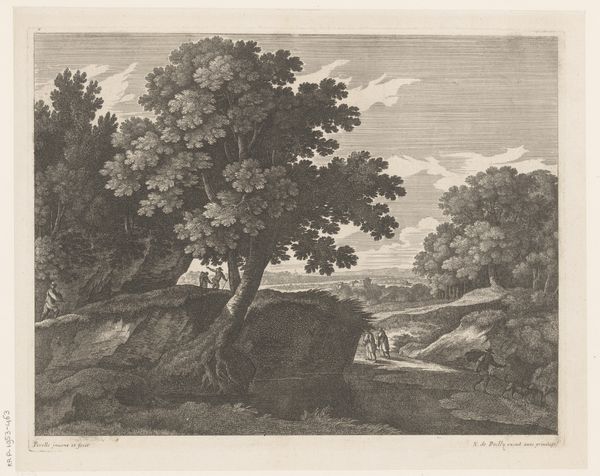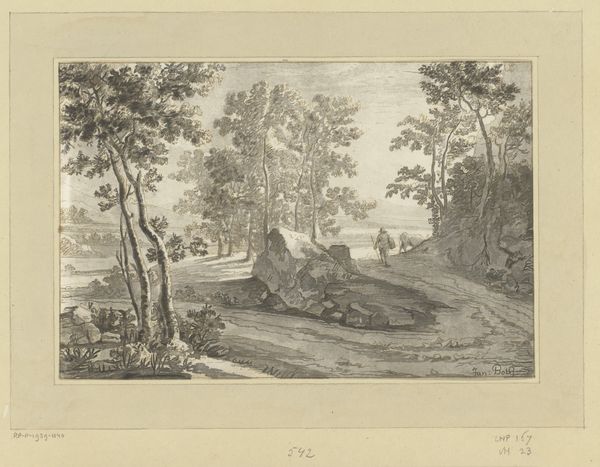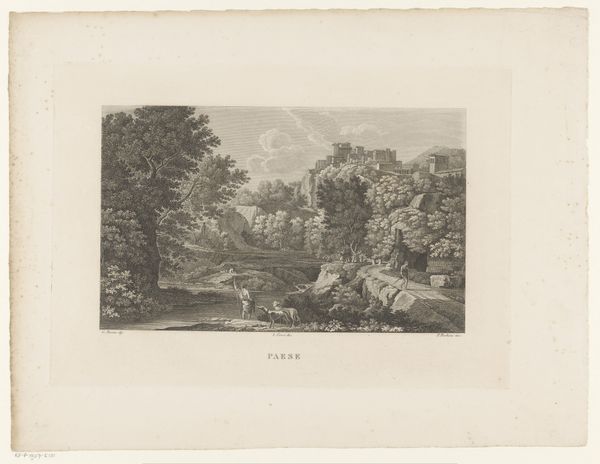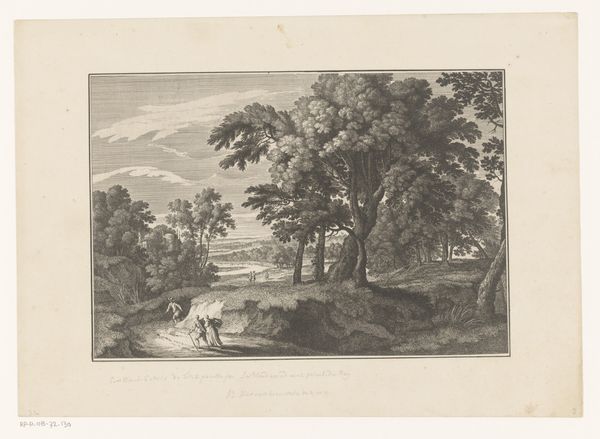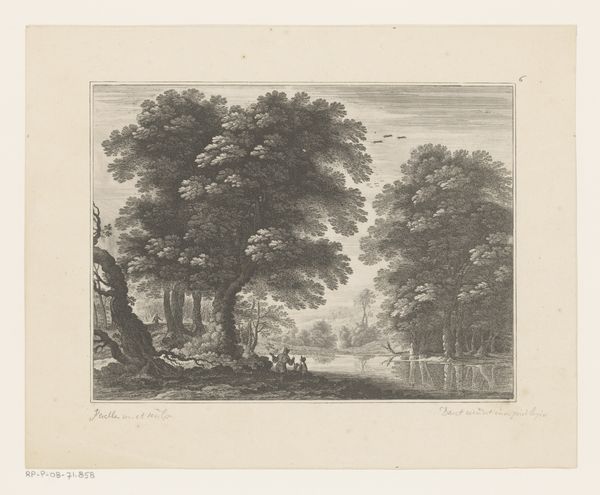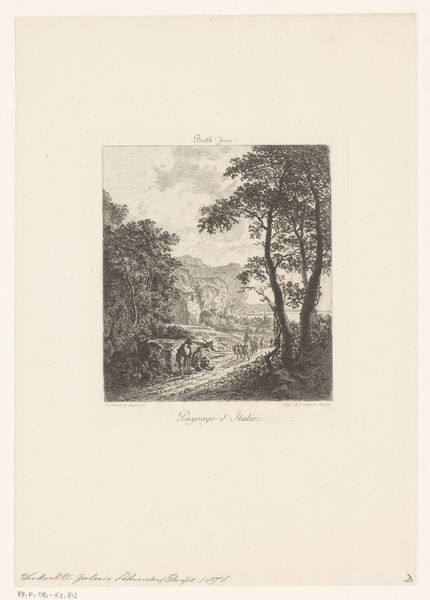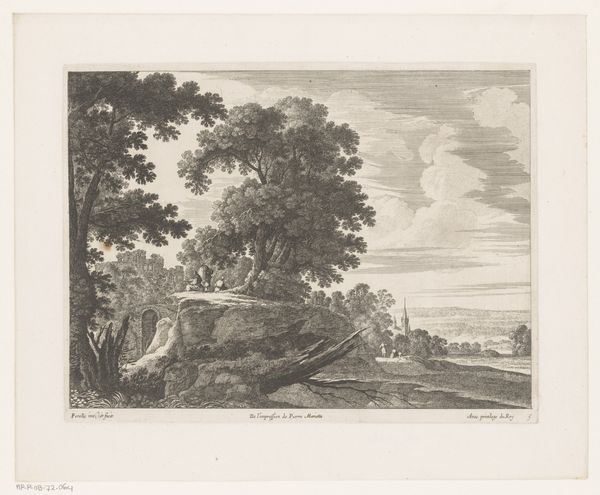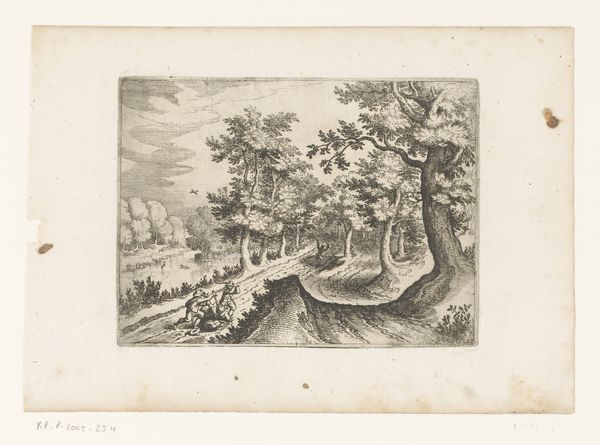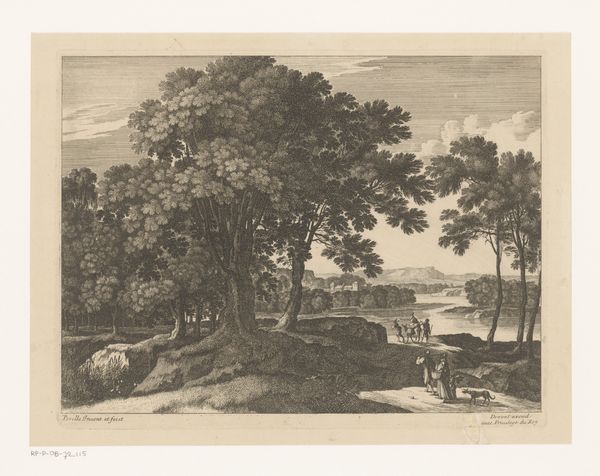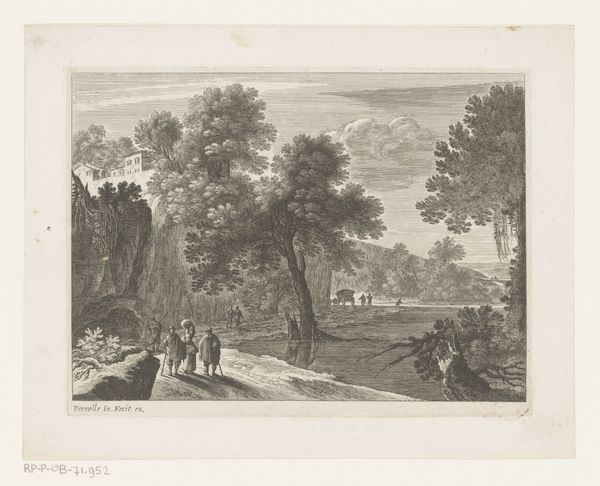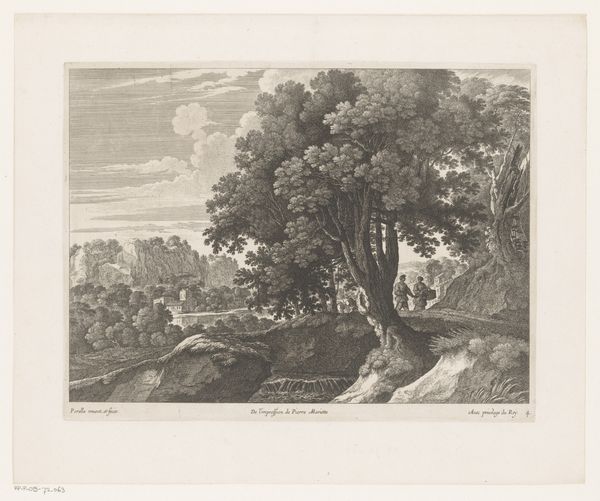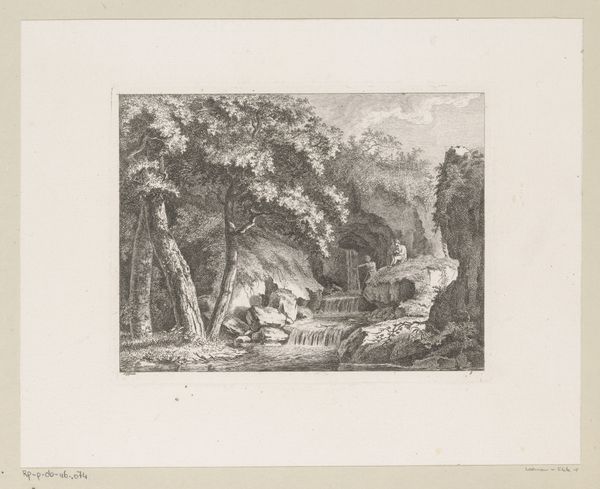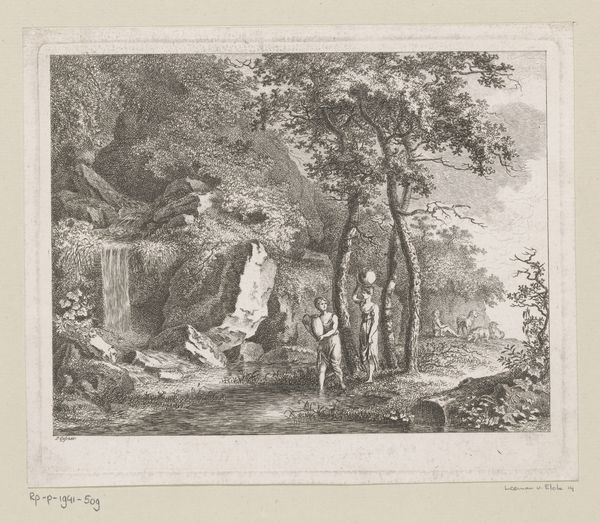
engraving
#
landscape
#
romanticism
#
engraving
#
realism
Dimensions: height 250 mm, width 316 mm
Copyright: Rijks Museum: Open Domain
Curator: This engraving, "Landschap in de buurt van Ariccia" or "Landscape near Ariccia," was created by Georg Heinrich Busse in 1841. The detail is really something, isn't it? Editor: Absolutely. There's a sort of serene, almost melancholic atmosphere hanging over it, despite the fairly conventional landscape subject. The texture in the leaves is quite remarkable for an engraving. Curator: Yes, notice how Busse used a relatively simple medium to render such varied textures—from the dense foliage to the weathered stone wall on the right. The lines give it a depth, too, don’t you think? Engraving, a form of intaglio printing, allowed for mass reproduction, making images like these available to a wide audience, fueling romantic ideas about the Italian landscape. Editor: Exactly. This romantic vision played a critical role in shaping European perceptions of Italy. Busse’s print contributes to the construction of this landscape as a site of natural beauty and historical significance, perpetuating the ideal of the Grand Tour, albeit accessible to those who couldn’t physically make the journey. It's interesting to see the consumption of landscapes like this, especially through reproducible media like engravings. Curator: And consider the labour that went into it. Each line carefully etched into the metal plate, requiring immense skill and time. It's not just the final image but the means of its production that's so compelling. You can almost feel the artisan’s hand, crafting not only art, but desire and imagination through skillful work with metal. Editor: True. Looking closer, the inclusion of figures further along the road offers a sense of scale and human presence within this grand scene. These small details also offer insights into the lives of everyday people in Ariccia, hinting at socio-economic relationships within the community. How do these figures fit into his broader cultural depiction? Curator: That's the genius of it. The figures become part of the natural world, reflecting Romantic ideals of man in harmony with nature. It's all incredibly meticulously executed. Editor: Indeed. It all serves to transport us—whether in 1841 or today—to a different time and place. Curator: An excellent point, that allows us to not just see a landscape but also how that landscape was being constructed and circulated through material means. Editor: Precisely, it urges us to examine the public life of art, its reception and broader consequences on visual culture.
Comments
No comments
Be the first to comment and join the conversation on the ultimate creative platform.
